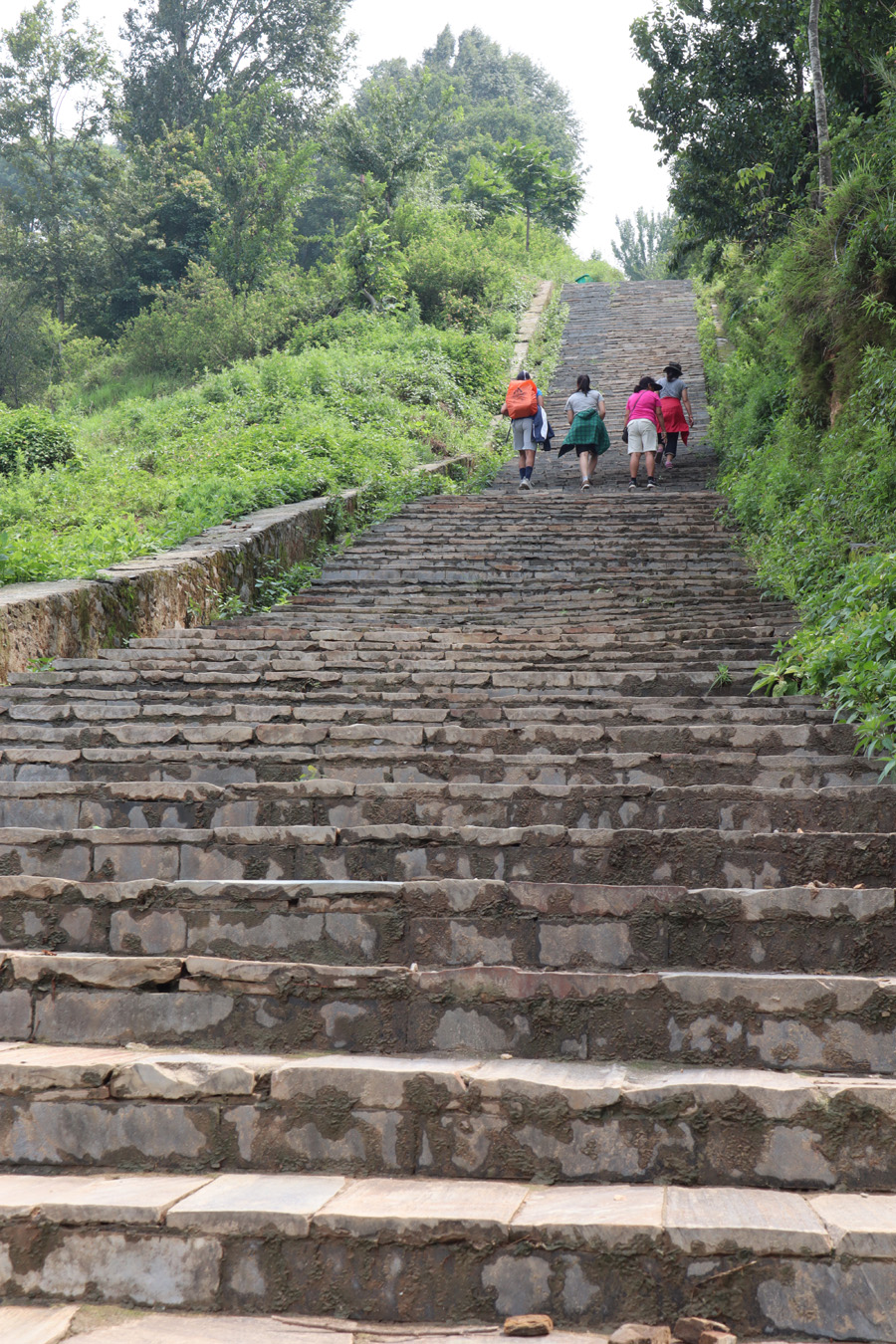
Vines, wild ferns, creepers, lush foliage, dense undergrowth, and an occasional fallen tree greeted us as we climbed up the steps. The damp places showed rocks encrusted with lush green moss. The mingled smell of the damp earth, the pines, the rotting fallen leaves, decaying wood, the dead foliage intensified by the ‘petrichor’ brought in by the recent rains made my head swim.
I spotted a shallow pit by the side of the trail, obviously dug up by a wild boar to forage for roots and tubers. Suddenly, the forest came alive with an ear-splitting sound. The cicadas! The loudest among all the insects of the world, they are ‘one of nature’s great sound–atmospheric and enigmatic.’
While doing frequent cycling jaunts on the Mudkhu-Teen Piplé-Sanglé route north-west of the Kathmandu valley rim, I’d instinctively look up to my north at the towering forested hills above Jitpur Phedi, my eyes glued to the breach on the sheer craggy height. It literally beckoned.
That crack on the naked rock-face, the local folks say, is the Tarkeshwor Mahadev shrine. For years, I longed to go there, but never got around to it. Someday . . . I’d keep telling myself. And the day did come on the last week of June 2019.
For mountain bikers, the two-and-a-half-hour round trip on the Mudkhu-Teen Piplé-Sanglé circuit, first on a paved road and later a dirt road past quaint little village-towns like Jitpur Phedi, Kabhresthali, and Sanglé promises a decent cross-country spin.
The track offers both modest up-hills and rock-strewn down-hills to thrill the mountain biking buffs including the “bikeoholics” (mountain biking limbo meaning hardcore riders) to while away their weekend mornings. Small wonder, it has become a popular haunt for all the bikers.
Hiking not biking
This time, the trip happened to be a hike and not a ride on my bicycle. There were five of us –Shayeet, my cycling partner, his mother, Shalu, my wife, Radhika, I and a teenager guest from Bangladesh, Adriana. A first cousin to Shayeet, she was in Kathmandu for her holiday. We made quite a mixed bunch, old, not-very-old and kids in their teens!
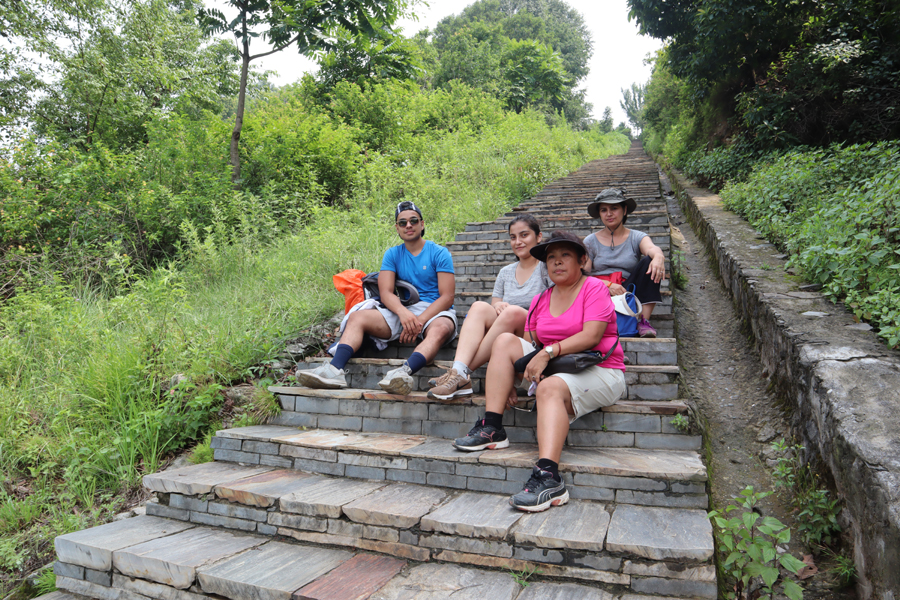
None of us had been to the place before, so no one knew the route. A quick look on the Internet helped me. We decided on a ride to Teen Piplé and then hike from there (buses ply on the road as it happens to be the Trishuli Highway with beautiful hill-towns like Kakani and Rani Pauwa en route). We did not catch a bus but drove instead, a 45-minute ride, in my car.
Wavering start
As the Internet did not have enough info on the place, things like distance, villages on the track, teahouses and the like, we thought it best to pack our lunch. Later, we found that we had figured it right.
As we planned to leave after breakfast, we prepared the food the previous night. With rain-jackets, umbrellas, water bottles, and, whatnots taken care of, we were all set to backpack it to Tarkeshwor the next day.
Come the next day, and I awoke to a sudden thrumming, which soon turned into a familiar pelting sound. Oh, no–the rain! I cursed. I always love the sound of the rain drumming on the windows and the floor outside my patio. But never did I hate the rains so much than that particular morning. At first, it was just a light pitter-patter, but soon it started pouring.
“There goes our trip down the drain,” I hollered. Hoping for the impossible to happen, Radhika and I helped ourselves with breakfast. More likely than not, the rest of the group, our close neighbors, was going through the same plight.
The rain, lo and behold, suddenly showed the signs of letting up. Miraculously, it stopped. A little later the sun started peeking in through the clouds. Radhika’s phone rang, and the group made a hurried appearance. Time to move; everyone piled into the car and I took the wheel.
The winding drive past Mudkhu Bhanjhyang with the towering Nagarjun hill blanketed with the dense forest was a sight for sore eyes after the unsightly urban sprawl and the traffic snarl at the busy Ring Road. The paved road until Osho Tapoban, the Rajneesh Meditation Centre, was fairly good.
Because of muddy stretches, the onward driving got tricky and slowed down almost to a crawl. It bothered me that we might get caught out on the thick muck as the road was riddled with frequent muddy puddles, and deep ruts, which never seemed to end. Phew! To my great relief, we finally made it to Teen Piplé, the kick-off point for our hike.
The Hike

After parking our car at Teen Piplé, we picked up a few tips about the trail from the locals and hit the country pathway. As I could foretell, some said it would take an hour; others put it at a little over two hours. That’s how it is in the villages. Ten minutes can be a half-hour and an hour nothing less than two hours.
The ladies were spared the lugging as Shayeet and I volunteered to carry the backpacks with our food and other stuffs. “Whoa!” That came off Radhika. The long flight of steps right from the start looked intimidating. As it turned out, the trail seemed to be interspersed with dirt paths that made it easier for Radhika (she has a knee problem).
Panch Mané
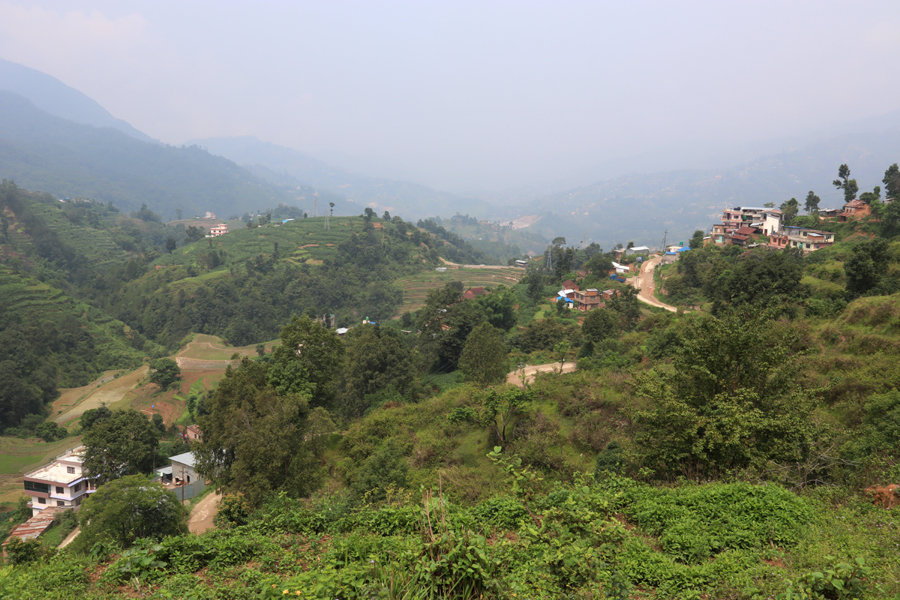
The trail continued uphill with scattered houses and cultivated lands amidst the country landscape. The hillside appeared green with sparse woodland, extensive spread of lush maize-crops and vegetables growing in small patches adjoining the houses. As we huffed it uphill, a little before the town of Panch Mané, our eyes met an impressive sight.
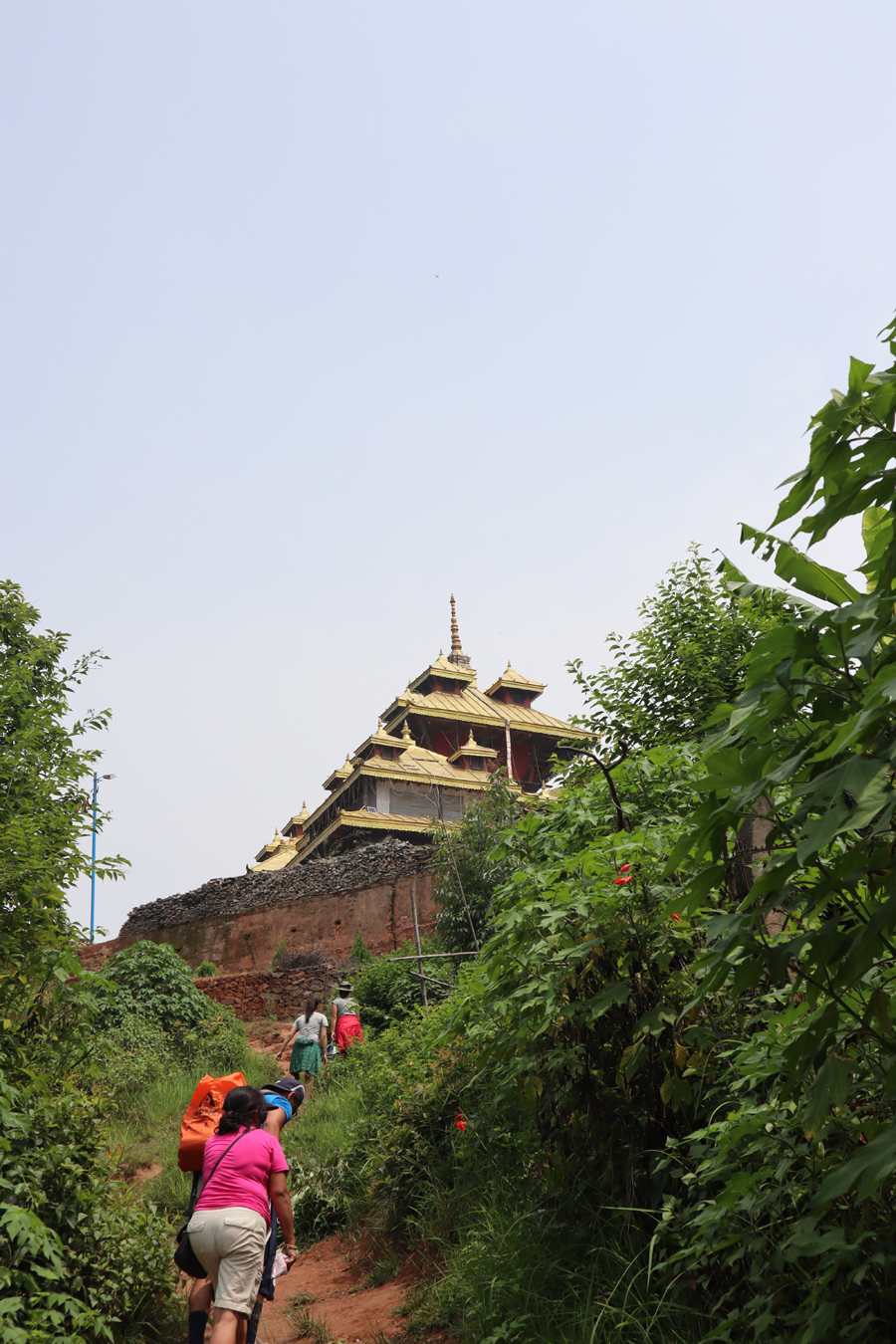
At first sight, we took it for a gompa(monastery) as the hills of the Kathmandu Valley rim are dotted with them. On cresting the ridge, it, however, turned out to be a Hindu shrine, the Bhuwaneswori Temple. Goddess Bhuwaneswori is none other than goddesses Bhagwati or Durga and revered as a manifestation of the formidable Kali Mata, too.
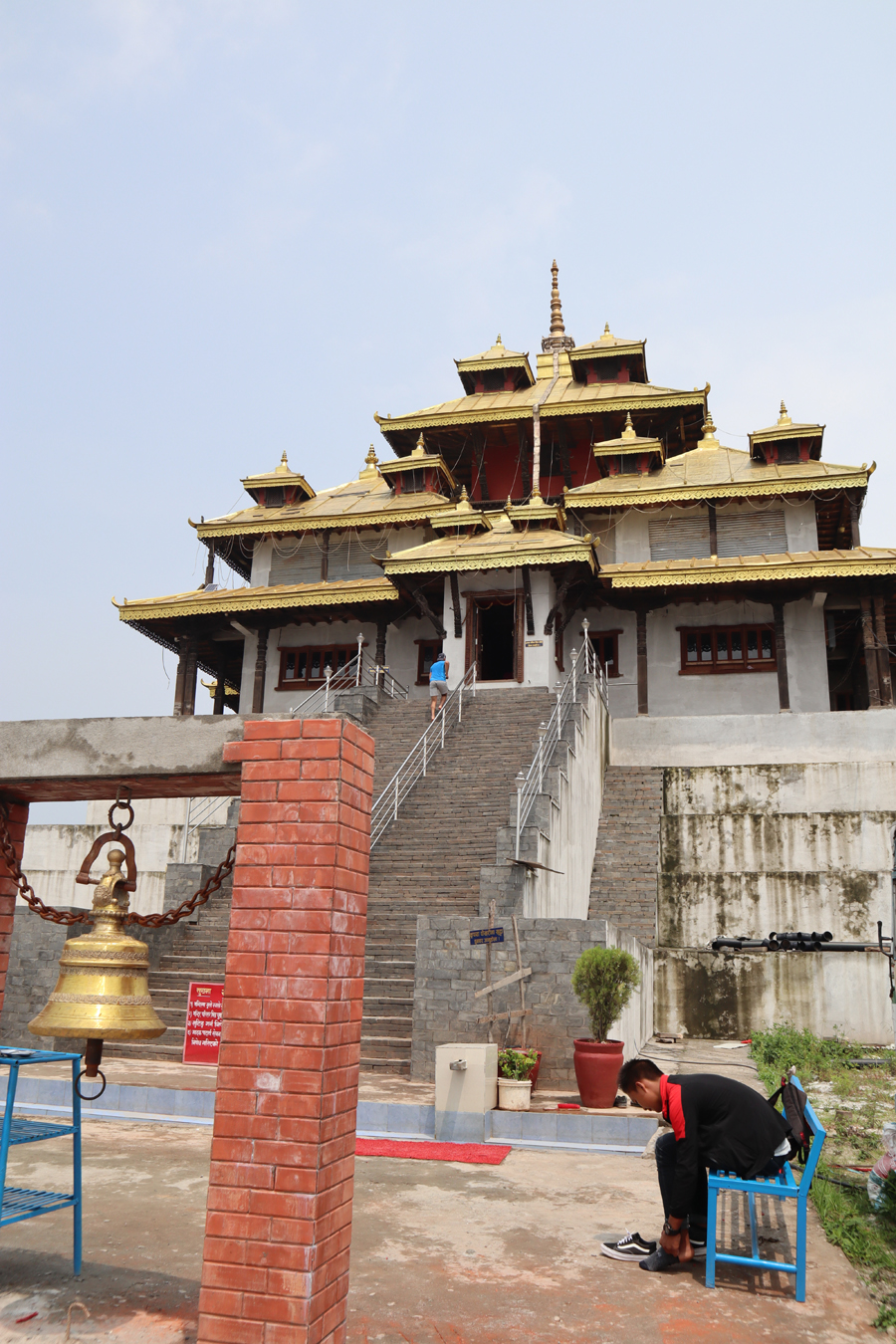
The multi-tiered pagoda-shaped temple with overhanging eaves and the roofs finished in golden colour stood high from the ground lending a dignified look. A long flight of steps led to the entrance. A young pujari (priest) led us in for the darshan (homage). As expected, no photography was allowed.
After the darshan, to our great surprise, the pujari offered a plate of Prasad (devotional offer of food) to each of us, which included fresh-fried puri, haluwa (kind of sweet made out of semolina) and potato curry. That mightily impressed us all. Starved as I was, I was tempted to go for a second helping, but checked myself.
“The temple was built some seven years back by Shyam Baba but the building was razed to the ground in the 2015 earthquake. The baba, who is also a great scholar, took the pains to rebuild it after the earthquake,” informed the young priest. A number of small pagoda-style houses in the foreground of the main temple, he said, were Baba’s living quarters.
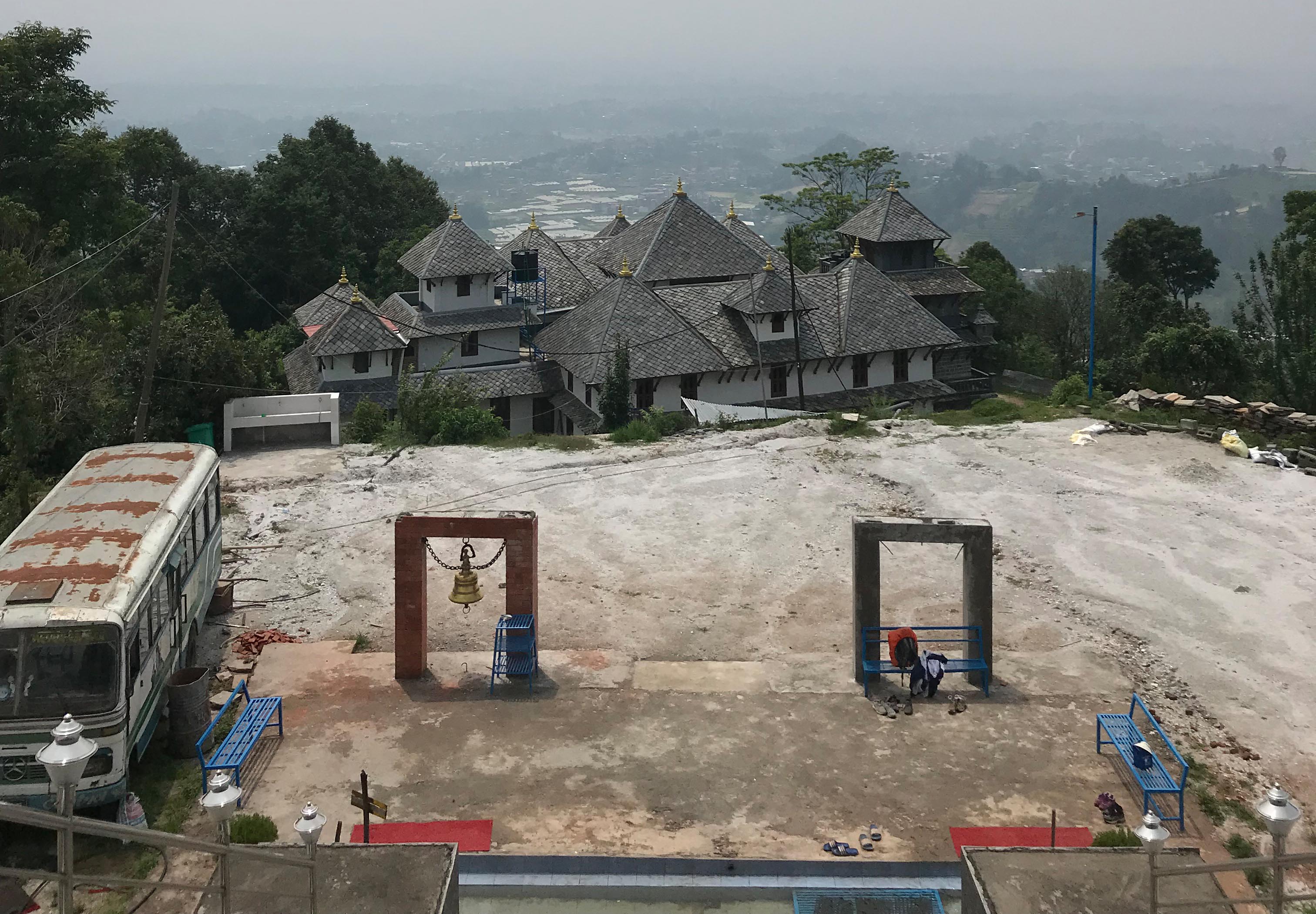
“Devotees throng the temple twice every year to observe Navratri, once in summer (Ram Nawami/Chait-dashain) and again at the onset of winter during Vijaya Dashami or dashain,” the young priest added.
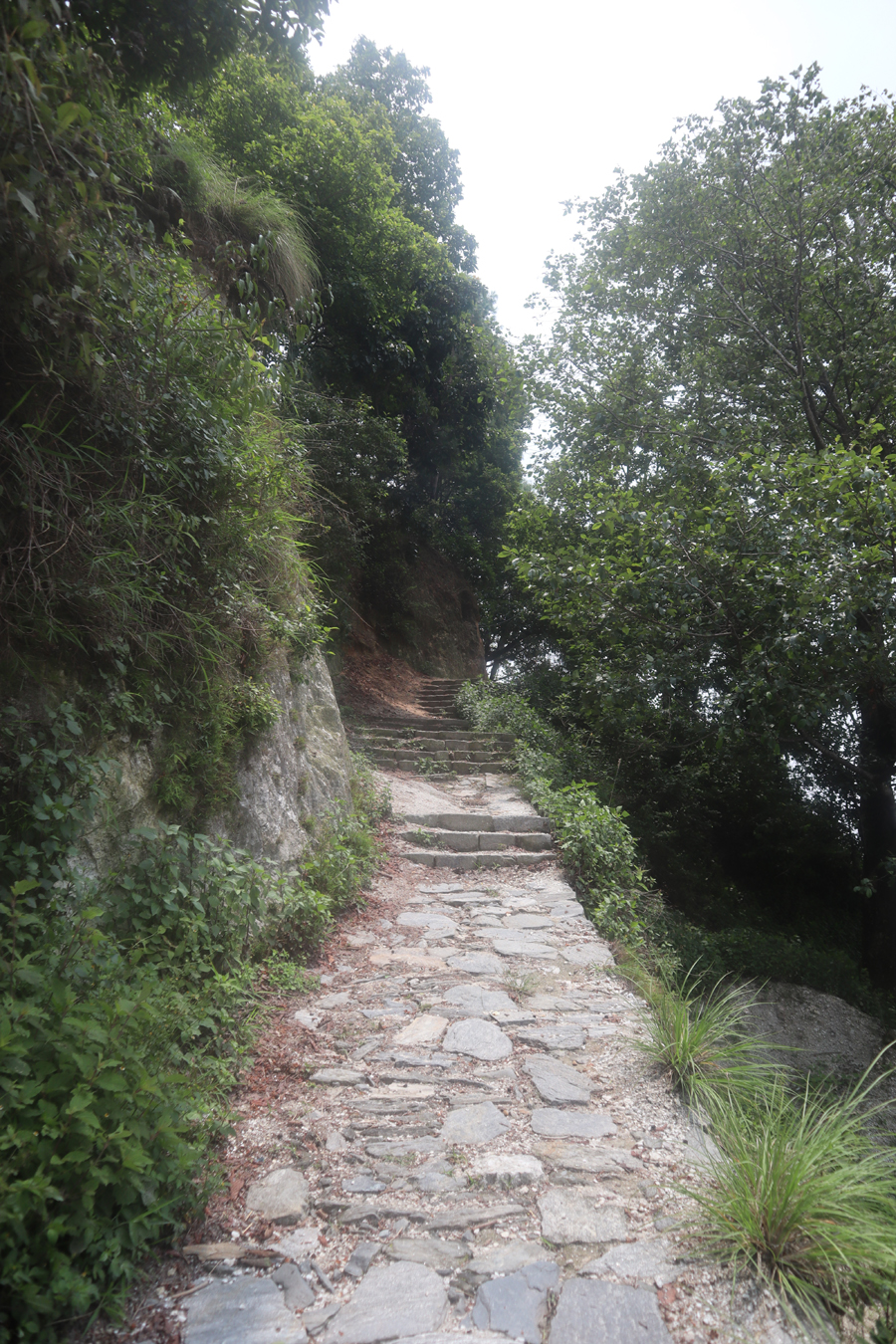
The trail then climbed again and met with a dirt road that led to the Panch Mané village. The cluster of houses lining the road also included a homestay. As we continued along the road, our eyes caught sight of a number of round brick structures, three to be exact, which appeared like water storage tanks. They were not.

“They are historic Manés (homogeneous to Buddhist stupas), which date back to the times of Prithvi Narayan Shah. This village is in fact named after those manés, “said Bijay Aryal, a local guy I happened to run into.
“During those days, there were four entry points into the Kathmandu Valley and Panch Mané happened to be one of them. Going by history, while stationed at Panch Mané, King Prithvi Narayan Shah contemplated the invasion of the then Valley of Nepal(Kathmandu, Bhadgaon, and Lalitpur),” he further added.
“Before the devastating earthquake of 2015, there were five of them, thus, the name Panch(five) Mané. Two of them were swept away in a landslip following the earthquake,” Bijay further explained.
After a cup of tea at a local teashop and a brief respite, we resumed our hike. The dirt road ended at a wooded foothill and turned into a narrow foot trail. With no habitation and not a soul around the trail climbed through tall pine trees and brush.
Shortly, the stone steps appeared, and Radhika broke into one of her vociferous protests (she did that during our last hike to Bishnudwar in the Shivapuri heights, too). Howsoever grumbling she did on such hikes, she loves it in all reality. She is plucky, all right!
The rest of us were doing good. Only Adriana seemed breathless and looked tired. She told me that she had never done a tough hike like that before and never been to that high an elevation. She came from Dhaka, an elevation of just four meters from the sea-level and with no hill whatsoever in sight.

And there she was slogging it up a steep hill doing above 1,700m from the sea-level! Great work, I said to the brave girl from Dhaka. She smiled back and said that she was really enjoying it, and that she will have quite a story to tell her friends back home.
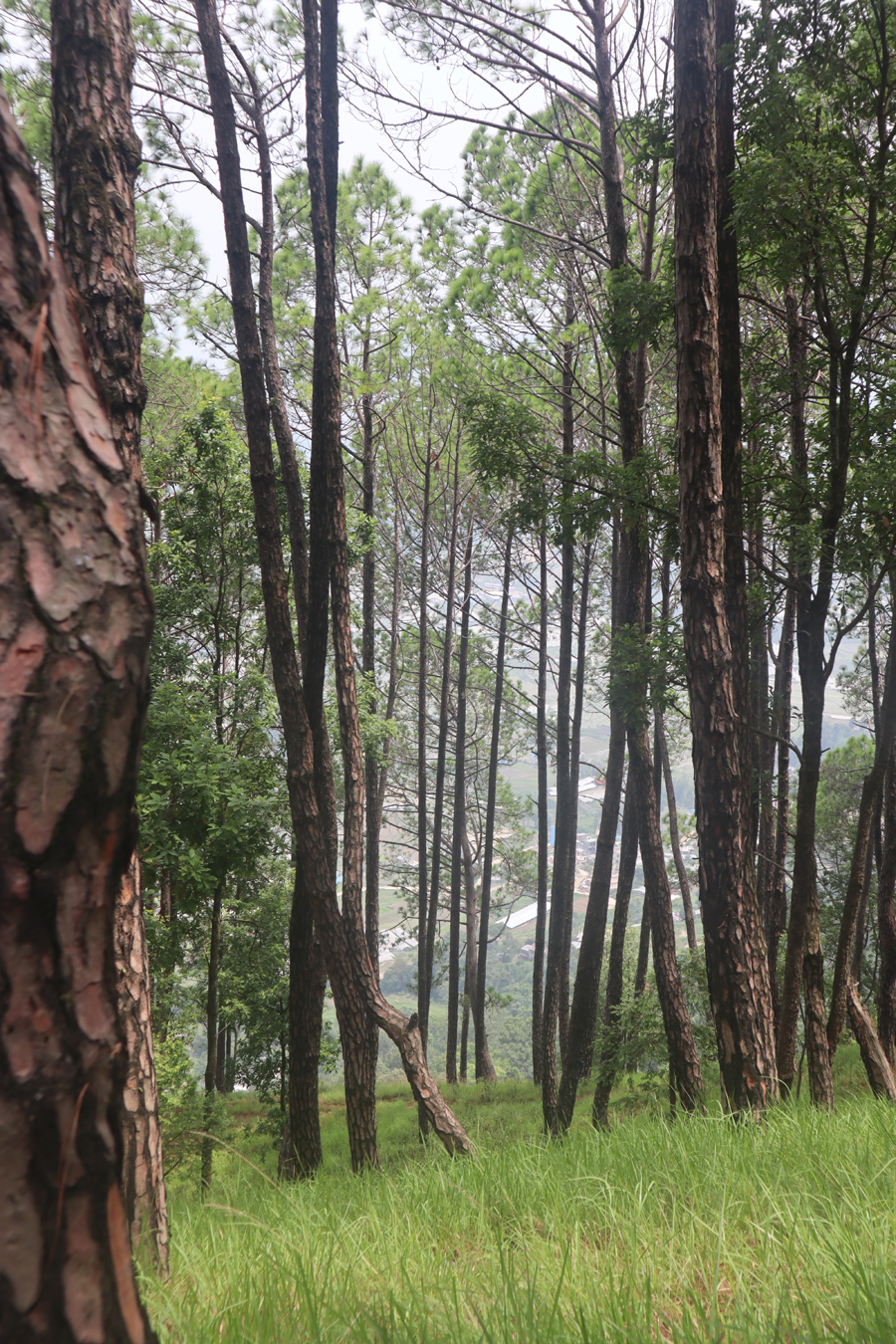
The forest
The trail got steeper and wound up through the thick forest. We came across a board that declared we were within the Shivapuri National Park. As we gained elevation, the tall pines were replaced by the deciduous broad-leaved forest, both temperate and sub-tropical. Surprisingly, the trail remained hushed with no one in sight. The only sound we could hear was the faint call of the birds and the wild crickets.
Vines, wild ferns, creepers, lush foliage, dense undergrowth, and an occasional fallen tree greeted us as we climbed up the steps. The damp places showed rocks encrusted with lush green moss. The mingled smell of the damp earth, the pines, the rotting fallen leaves, decaying wood, the dead foliage intensified by the ‘petrichor’ brought in by the recent rains made my head swim.

I spotted a shallow pit by the side of the trail, obviously dug up by a wild boar to forage for roots and tubers. Suddenly, the forest came alive with an ear-splitting sound. The cicadas! The loudest among all the insects of the world, they are ‘one of nature’s great sound–atmospheric and enigmatic.’
The Shrine
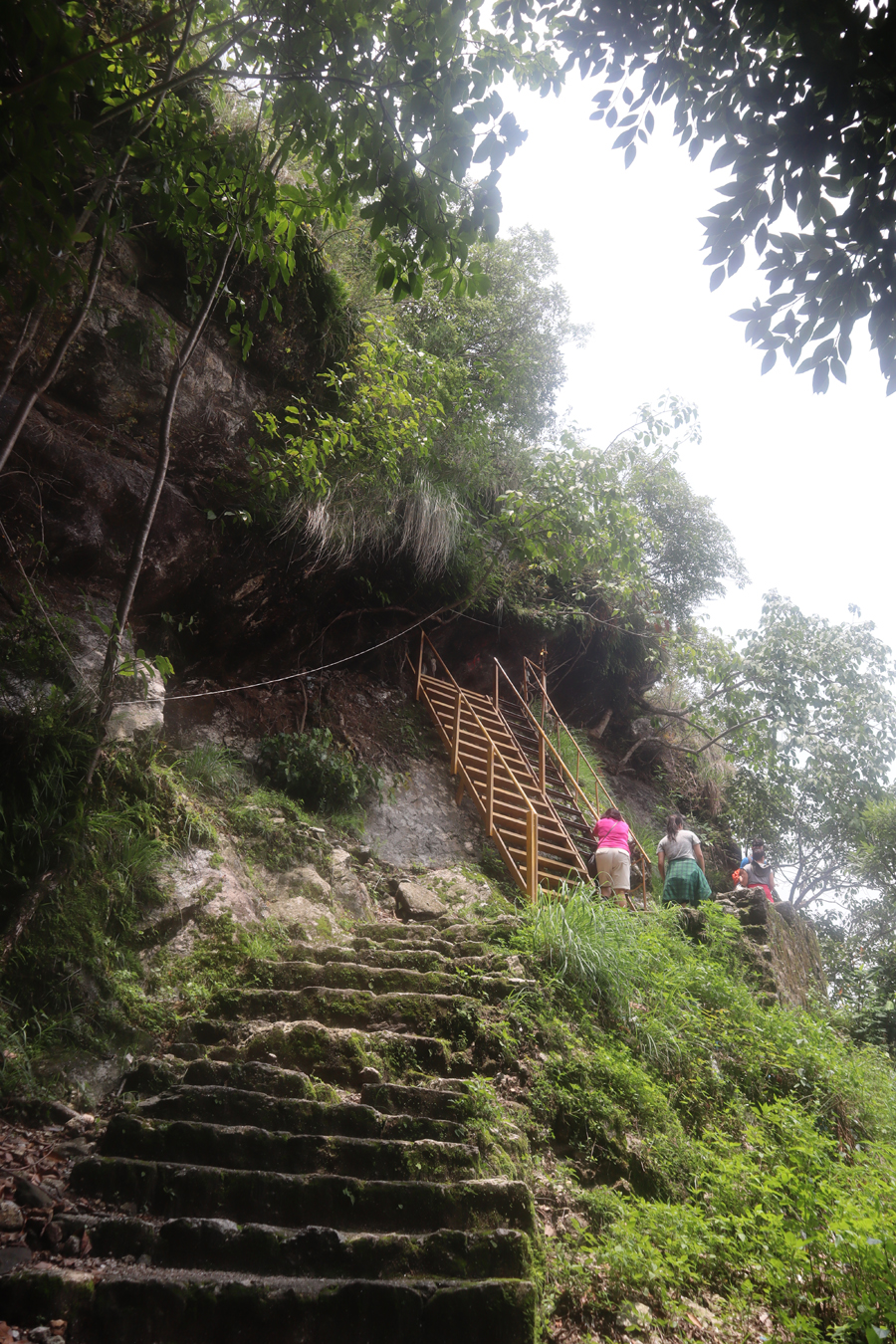
After something like an hour on the trail uphill, we spotted a metal step ladder leaned against a sheer rock face with overhanging undergrowth. We had finally made it to the Tarkeshwor Mahadev. The height commanded a birds-eye-view of the valley–once pristine and verdant some three decades ago now looking pathetic enveloped in filthy haze and smog.
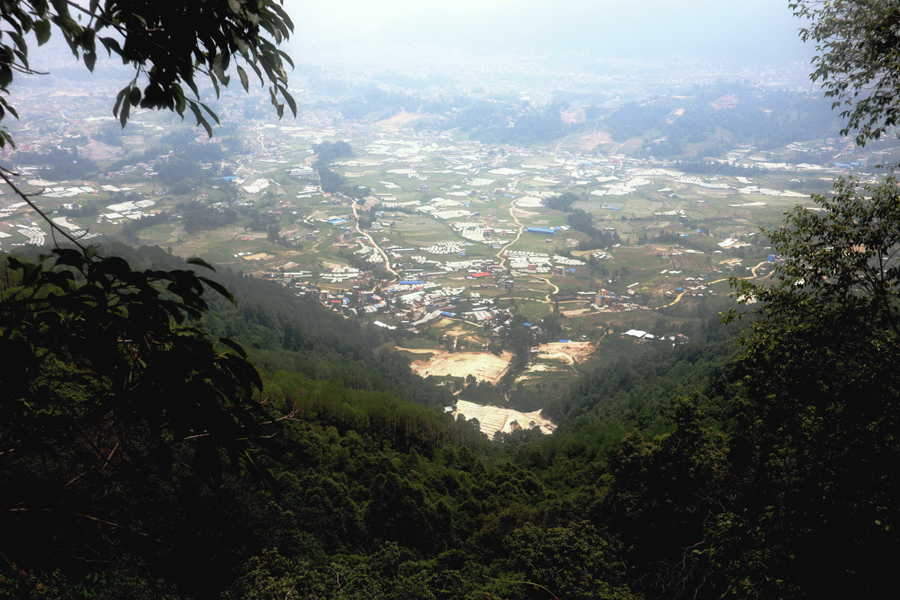
The main shrine in two storeys seemed carved into a solid huge boulder looking like an alcove with a sheer drop to its south. A stone Shivalinga with four faces (mukhalinga) sat in the far corner and a stone Nandi (sacred bull calf), a vehicle and gatekeeper of Lord Shiva, stood sentinel in the foreground. A small pit next to the entrance held a little stagnant water. In fact, it was not.

“The water in that pit is from the sacred lake in the Himalayas, the Gosaikunda (4,380m). The water drains into it perennially,” said Baba Shrinath, the only mortal we met on the hike. A flight of metal steps went up to a narrow rocky overhang in the upper storey, which housed metal bells and a trident.
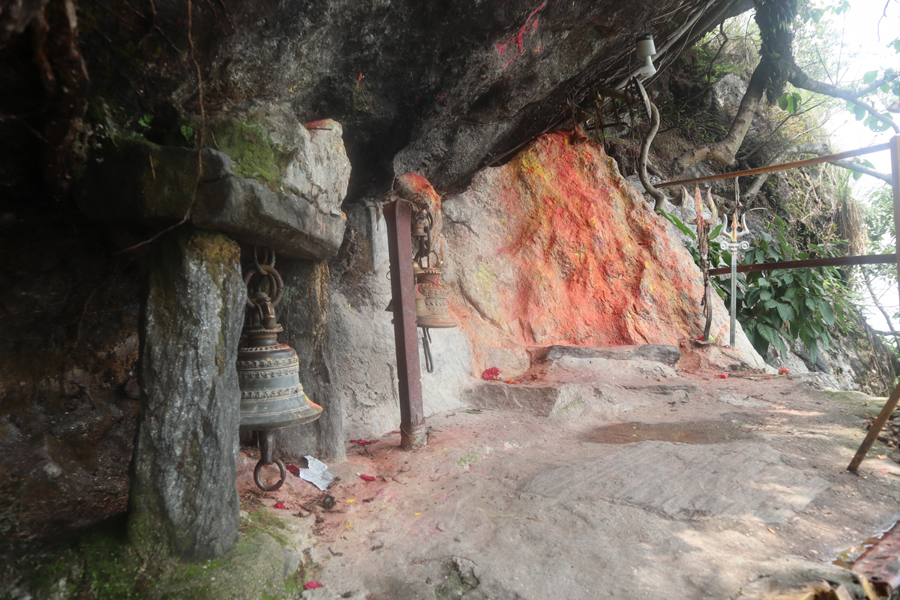
“The Tarkeshwor Mahadev is said to have surfaced at the present site in the Satyayug (Golden Age; the first-ever epoch on earth) when one of the lifeless limbs of Lord Shiva’s first consort, Goddess Sati Devi’s right limb fell off at the spot,” the Baba shed light on it by recounting one of the mythological accounts from the Swasthani Brata Katha .
“The Gosaikunda water began draining into the pit as a result of deep-seated tapasya (spiritual deep meditation, an exercise in austerity, and self-discipline) performed by yogis (saints) from the Satyayug,” the baba further added. He has been residing at the Tarkeshwor site for the last 25 years.
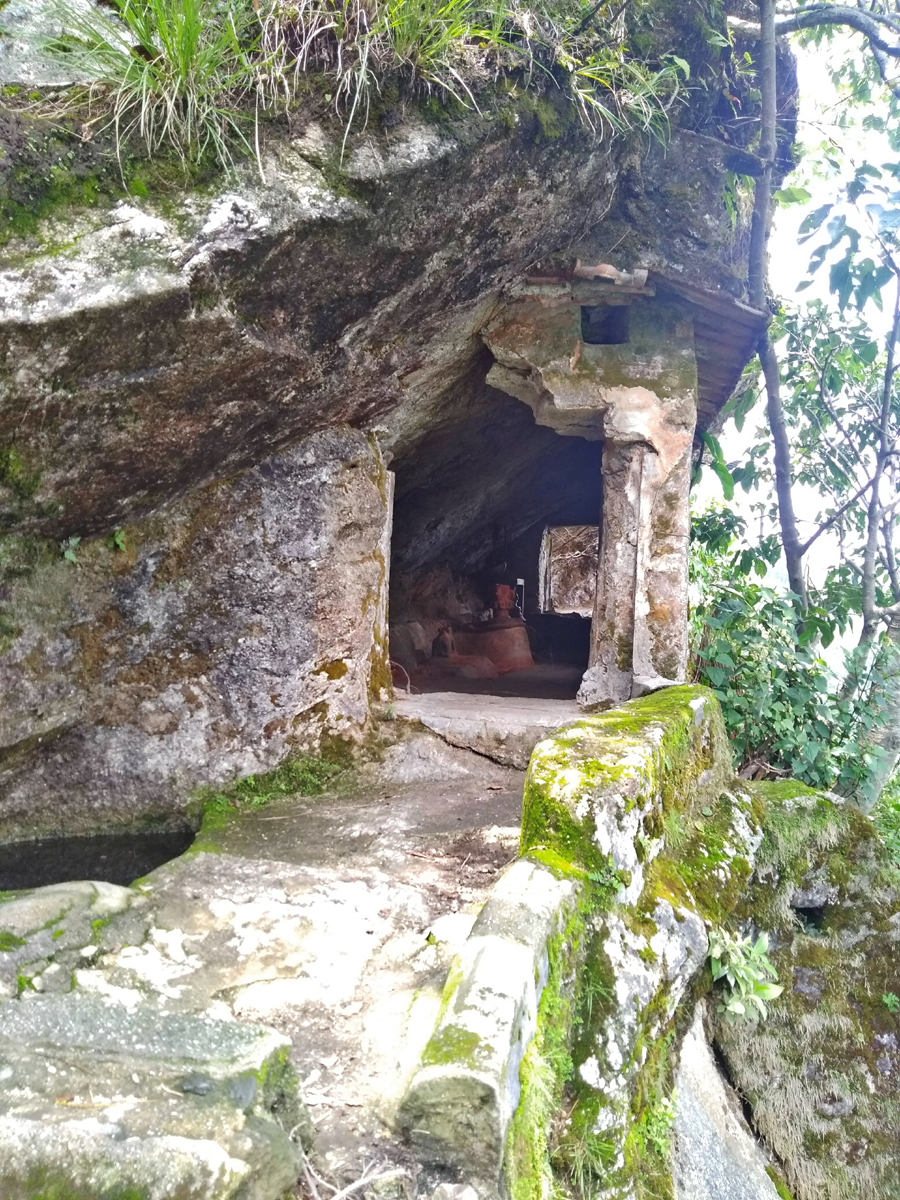
I was so famished that I could eat a horse, so were the others. We wolfed down our packed lunch of home-cooked chicken biryani and matar paneer, rested a bit and then backtracked down the hill. At Panch Mané, we came across an open truck parked beside a teashop. We asked the driver if we could hitch a ride up to Teen Piplé. It was a big yes.
Radhika seemed the happiest as the way back still meant coping with a long flight of knee-buckling steps down to Teen Piplé (going down-steps hurts the knees more for those with the problem). Frankly, I was too, for I was spared her screaming bloody murder at me.

















